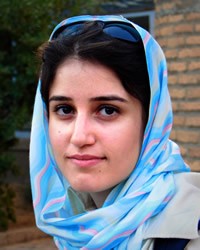Persian in New Zealand

Photo Source:
Hamed Saber - Flickr
Creative Commons
|
Send Joshua Project a map of this people group.
|
| People Name: | Persian |
| Country: | New Zealand |
| 10/40 Window: | No |
| Population: | 5,400 |
| World Population: | 48,380,900 |
| Primary Language: | Persian, Iranian |
| Primary Religion: | Islam |
| Christian Adherents: | 2.00 % |
| Evangelicals: | 1.40 % |
| Scripture: | Complete Bible |
| Ministry Resources: | Yes |
| Jesus Film: | Yes |
| Audio Recordings: | Yes |
| People Cluster: | Persian |
| Affinity Bloc: | Persian-Median |
| Progress Level: |
|
Introduction / History
By definition, Persians (also known as Iranians) are an ethnic group native to Iran. The Persian language, called Farsi, is part of the Indo-Iranian language family, and is the official language of Iran. Dari, the language of the elite in Afghanistan, is a dialect of modern Farsi. Around 1000 B. C. , Persian groups began to settle in the territory that is now Iran. Loosely associated Persian tribes became a more cohesive political unit under the Achaemenian dynasty. Their unity soon made them the dominant ethnic group in the region. For 1,200 years, Persia maintained a culture that became increasingly more complex and rigid. This laid the foundation for a successful Arabian conquest of Persia in the seventh century AD. It was not until the Islamic revolution of 1979 that massive changes came both to Iran and to the Persian people. Although the vast majority of Persians now live either in Iran or in one of the nearby Central Asian or Middle Eastern countries. Persian communities also live in Western Europe and even New Zealand.
What Are Their Lives Like?
Though most of the Persians in New Zealand came after the 1979 Iranian Revolution, others joined them in the 1980s and 1990s. This accelerated during the Iran-Iraq War. Those who came to New Zealand after 2010 are usually professionals who hope to earn higher wages. The basic social and economic unit in Persian culture is the nuclear family; however, some families join together to make larger units. Families are traditionally patriarchal, patrilineal and patrilocal. This means that their society is strictly male dominated. This is changing for the more secularized Persians in countries like New Zealand.
What Are Their Beliefs?
Prior to the Arab invasions, the Persian religion was Zoroastrianism. This religion taught that there was an eternal struggle between the forces of good and evil. Shia Islam became the national religion of Iran in the sixteenth century, at which time the ulama (clergy) began playing an important role in both the social and political lives of the people. Today, most Persians are Shia Muslims of the Ithna Ashari branch, and are radical in their adherence to Islamic laws and principles. Thanks to the excess of the Iranian government, a high percentage of Persians are secularized and tired of forced religion. The Lord is growing his Church in Iran, and many have come to faith in recent years. Though the Persian diaspora seems to not be responsive to the gospel, they might be in New Zealand where a higher percentage of them are Christian believers.
What Are Their Needs?
Persians need their spiritual eyes will be opened. Some are staunch Shia Muslims while others are secularized. They need to hear about the grace, mercy and power of the Lord from Persians who follow Christ.
Prayer Points
Pray for Persian believers from Iran to take Christ to Persians in other countries including New Zealand. Pray for a spiritual hunger among the Persian diaspora that will result in a movement to Christ in New Zealand. Pray for the Lord to show himself powerful and loving to the Persians in New Zealand.